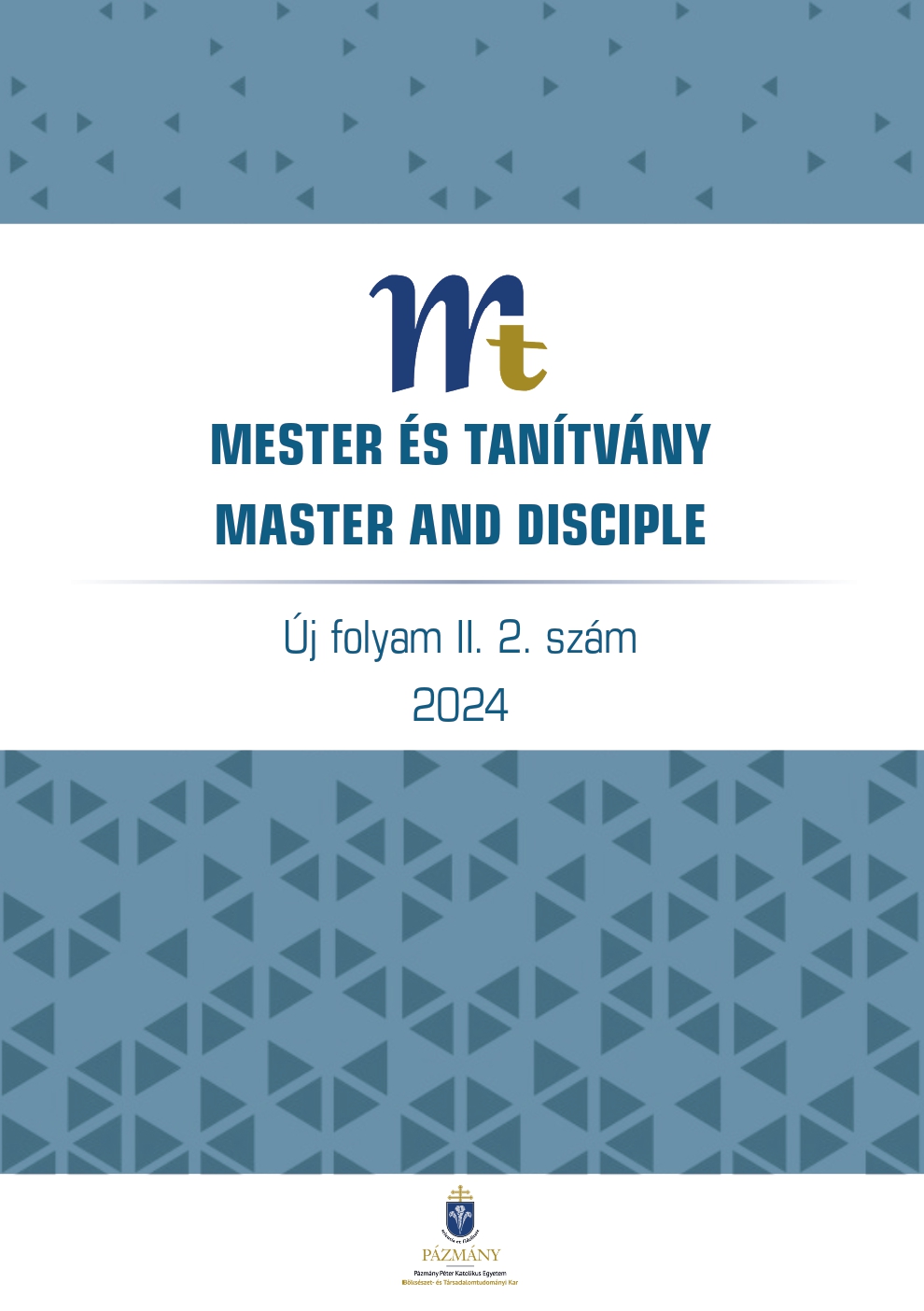Published 07-01-2025
Keywords
- social values,
- Kodály,
- contemporary music pedagogy
Copyright (c) 2024 János Bali

This work is licensed under a Creative Commons Attribution 4.0 International License.
Abstract
As a music teacher, one sees a head-on collision between the school curriculum and young people’s relationship to music. Apart from the work of a few exceptionally talented teachers, music lessons are mostly failures: most of the teachers and students are playing to survive. Education funding worldwide favours the cheapest, most economically viable courses: there is a constant battle to maintain, let alone improve, music education, with artists and teachers constantly having to present arguments of economic viability. Today’s schoolchildren have grown up without their parents singing to them, with only the radio playing from morning to night. High culture is increasingly taking a back seat to mass culture. In Hungary, Kodály’s pedagogical programme, which is linked to Hungarian folk music, and the institutional system that is still in place today, based on the authority of his personality, mean that the situation of music teaching is unique. We will examine how today’s social situation and cultural background differs from Kodály’s time, how the children’s abilities have changed, and what life strategies are possible for them. Kodály found an adequate answer to the pressing questions of his time: to follow his spirit, we must be able to develop paths in the present with the same freedom, strength and sense of reality as he did.
References
- — Bali J. (2016). Tanítás és szabadság. Új pedagógiai szemle, 2016/7–8, 18–24.
- — Bali J. (2017). Essai a zenetanítás problémáinak áttekintésére. https://janosbali.com/wp/wp-content/uploads/2018/12/zenetanitas-essai.pdf
- — Bali J. (2023). „Dieses Buch habe ich von meinen Schülern gelernt”. Mester és tanítvány, Új folyam, I/1, 127–130. https://doi.org/10.61178/MT.2023.I.1.8
- — Baumgarten, A. G. (1750). Aesthetica. Kleyb, Frankfurt an der Oder. Válogatott részei magyarul, Bolonyai G. ford.: Esztétika (1999). Atlantisz, Budapest.
- — Dahlhaus, C. (2004). Az abszolút zene eszménye. Ford. Zoltai D. Typotex, Budapest.
- — Dobszay L. (1972). The Kodály Method and Its Musical Basis. In Studia Musicologica Academiae Scientiarum Hungaricae, 1972, T. 14, Fasc. 1/4, 15–33.
- — Gábor L. (2023). Kodály zenepedagógiai koncepciója a XXI. század perspektívájában. https://kodalyhub.hu/kodaly-koncepcioja-a-xxi-szazad-perspektivajaban
- — Green, L. (2008). Music, informal learning and the school: a new classroom pedagogy. Ashgate, Aldershot.
- — Hanák P. (1978). Magyarország társadalma a századforduló idején. In Hanák P., Mucsi F. szerk. Magyarország története, 1890–1918. Akadémiai Kiadó, Budapest. 403–515.
- — headphonesaddict (2024). https://headphonesaddict.com/music-genre-statistics/
- — Hegel, W. F. (1807). Phänomenologie des Geistes. Szemere S. ford. (1979) A szellem fenomenológiája. Akadémiaia Kiadó, Budapest.
- — Kovács G. (2024). Van valami eléggé aggasztó a magyar Z generációsok munkavállalási terveiben.
- https://hvg.hu/360/20240830_hvg-z-y-generacio-munka-munkahely-munkavallalo-nix-ugribugri
- — Maniates, M. R. (1989) The Combinative Chanson: An Anthology. A-R Editions Inc., Madison.
- — Ormay I. (1958). Megbukott zeneritikák. Zeneműkiadó Vállalat, Budapest.
- — Pukánszky B., Németh A. (1996) Neveléstörténet. Nemzeti Tankönyvkiadó, Budapest. Online: https://mek.oszk.hu/01800/01893/html/
- — Püski L., Barta R., Gyarmati Gy. (2000) Magyarország a XX. században, I–V. Babits Kiadó, Szekszárd.
- — Rainbow, B. (2001). Tonic Sol-fa. Szócikk: New Grove Dictionary of Music and Musicians, 2nd edition. Macmillan, New York.
- — Riegl, A. (1919). Der moderne Denkmalkultus. In Gesammelte Aufsätze. Dr. Benno Filser Verlag GmbH, Augsburg–Wien. 144–193. Magyarul: A modern műemlékkultusz lényege és kialakulása. In Adamik L. (ford.), Beke L. (szerk.) (1998). Művészettörténeti tanulmányok. Balassi, Budapest. 7–47.
- — Safransky, R. (2017). Idő. Simon József ford. Typotex, Budapest.
- — Schaeffer, P. (1967): Solfège de l'objet sonore. Új kiadás: (1998) Institut National de l'Audiovisuel, Paris.
- — Schafer, R. M. (1965). The Composer in the Classroom. Univ. of Michigan.
- — Schafer, R. M. (1976). Creative Music Education: A Handbook for the Modern Music Teacher. Macmillan Pub. Co.
- — Schönberg, A. (1911). Harmonielehre. Universal Edition, Wien.
- — Sorokowski, P., Puts, D., Johnson, J. és tsi (2019). Voice of Authority: Professionals Lower Their Vocal Frequencies When Giving Expert Advice. J Nonverbal Behav 43, 257–269. https://doi.org/10.1007/s10919-019-00307-0
- — Steigervald Krisztián (2023). Generációk és szakadékok – interjú Friderikusz Sándor műsorában. https://www.youtube.com/watch?v=j7I7pr3kFrI
- — talkclassical (2017). https://www.talkclassical.com/threads/popularity-within-classical-music-optimism-or-pessimism.51353/
- — Tábor B. (1939). A zsidóság két útja. Hajnal Nyomda, Budapest. Új kiadása: (1990) Pesti szalon, Budapest.
- — Váradi J. (2023). A művészeti nevelés helyzete és szerepe a 21. században. Balassi, Budapest.
- — Vose, J. (2021). Youth and Classical Music. https://www.virtualsheetmusic.com/blog/youth-and-classical-music/
- — Waddington, E. (2022). Noise pollution and its impact on human health. https://earth.fm/earth-stories/noise-pollution-and-its-impact-on-human-health/
- — Webern, A. (1933). Út az új zenéhez. Ford. Maurer Dóra. In Webern, A. (1983) Előadások–írások–levelek. Zeneműkiadó, Budapest. 7–56.
- — winwinwin (2023). Proart Zeneipari Jelentés. https://zeneipar.info
- — Zalai B. (1984). A rendszerek általános elmélete. Gondolat, Budapest.


